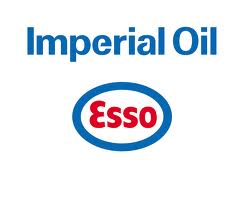Lawsuit accuses Imperial Oil of contaminating family’s farm by Marty Klinkenberg, January 17, 2014
An Edmonton man is suing Imperial Oil for allegedly contaminating his family’s farm of nearly 100 years. In a lawsuit filed this week with the Court of Queen’s Bench, Rick Bilozer seeks unspecified damages from the company for setting fire to his field, spilling oil on his property and using it as a dumping ground for soiled materials. Bilozer, who is continuing a battle with the company that his late mother began in 1993, maintains that Imperial reneged on agreements to remediate affected portions of his farm off Highway 60 between Devon and Calmar. The burial of contaminated materials caused contamination to spread to groundwater and adjacent soil, including excessive levels of benzene, ethyl benzene, chloride, sodium, sulphates and hydrocarbons, a court document says. Statements of claim contain allegations not proven in court.
Bilozer is seeking an order to force Imperial to comply with remediation agreements in reasonable time, and damages representing the costs of returning the land back to its original state. That amount would be determined at trial, the lawsuit says. “I have a figure in mind, but I am going to need some input on what the figure would be based on the level of contamination,” said David Wolsey of the Edmonton law firm Snyder and Associates, which is representing Bilozer and his wife, Barb. “We are talking about a lot of money.”
Imperial spokesman Pius Rolheiser confirmed this week that a lawsuit had been served, and said the company will respond at the appropriate time. “As the matter is before the court, we cannot comment further,” Rolheiser said.
The Bilozers have negotiated for years with the company, which has hired three environmental consulting firms to assess the property over the last decade. The firms drilled 101 bore holes, excavated 31 test pits and set up 18 monitoring wells while collecting water and soil samples and identifying materials used as fill on a two-hectare site. The company originally entered into an agreement in 1952 with Rick Bilozer’s parents and set up wells on four leased sites.
The lawsuit says Imperial set brush on fire in 1970 while clearing land, and that the blaze spread off the lease site and set peat beneath the ground on fire for 10 years. That subsequently caused the ground to cave in and a swamp to form, which Bilozer claims the company later filled with concrete pumpjack pads stained with hydrocarbons. A number of spills also occurred on the property, the lawsuit states, including a leak of 5,000 litres of oily emulsion on July 19, 1982.
Alberta Environment sent letters to the company in 2005, 2006 and 2009 directing it to reclaim the damage land under a provision of the Environment Protection and Enhancement Act, but it has not occurred. Environment officials say they will not intervene as long as Imperial is making attempts to resolve the situation. [Emphasis added]
[Refer also to:
Imperial Oil shown the door in dispute with Bilozers over contaminated land between Calmar and Devon
‘They aren’t going to beat us’: Angry landowner locked in 40-year dispute with Imperial Oil
Imperial Oil leaking natural gas wells a nightmare for homeowners at Calmar
Imperial leaking gas well forces families out in Calmar neighbourhood
 Remembering Rumsey Ranch Convinced that government and industry were working in tandem to ignore and silence her concerns, Hanen filed suit in 1991 against Esso and the Energy Resources Conservation Board of Alberta for damages to the ranch’s cattle, soil, air and groundwater. While a settlement was ultimately achieved, the much more difficult task of finding ways of remedying, if not restoring the ranch’s environment is underway through the work of the Restoration Action Committee.
Remembering Rumsey Ranch Convinced that government and industry were working in tandem to ignore and silence her concerns, Hanen filed suit in 1991 against Esso and the Energy Resources Conservation Board of Alberta for damages to the ranch’s cattle, soil, air and groundwater. While a settlement was ultimately achieved, the much more difficult task of finding ways of remedying, if not restoring the ranch’s environment is underway through the work of the Restoration Action Committee.
There are a number of themes at work in the account given in this paper: the regulatory authority’s failure to regulate; political disinterest in redressing that failure; Esso’s refusal to acknowledge the extent of pollution and their strategy of portraying Hanen as a corporate adversary; the insignificance of the community’s role in the dispute; and perhaps most clearly, the utter lack of coherent management of remediation efforts after the groundwater pollution was confirmed in 1986….
Of course, the first thing that should be done is to immediately prevent any more input of contaminants. If the sources are not shut down, the problem will never be fixed.

